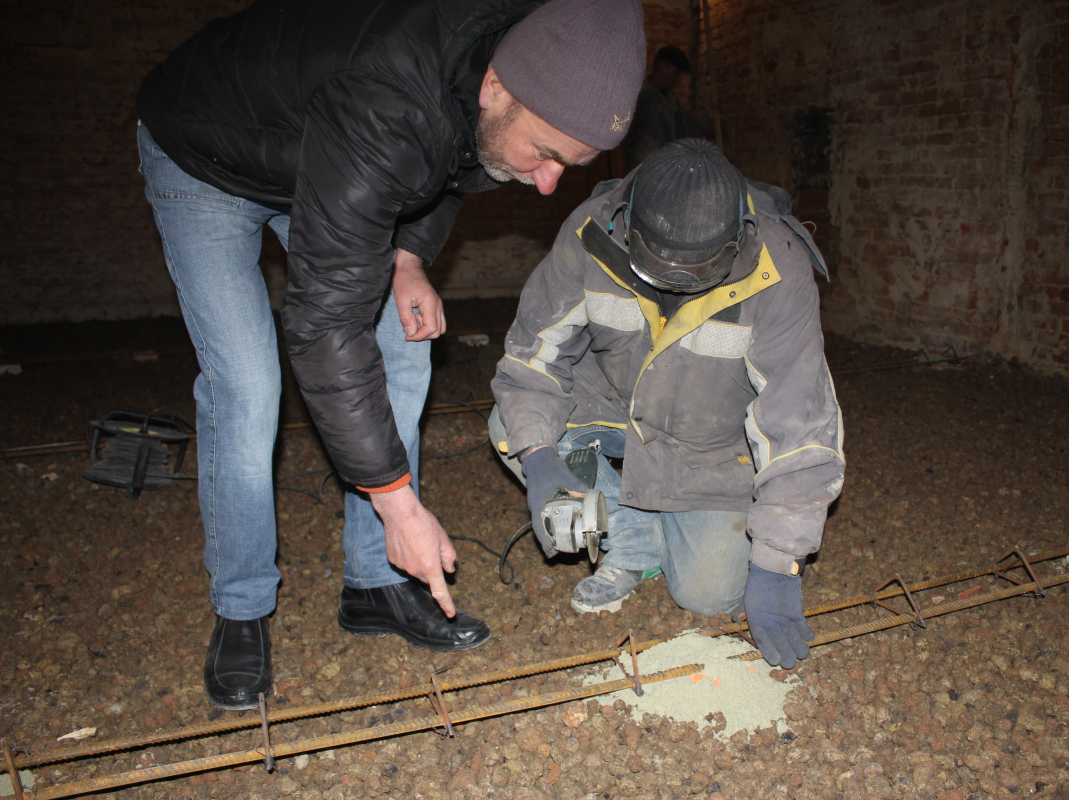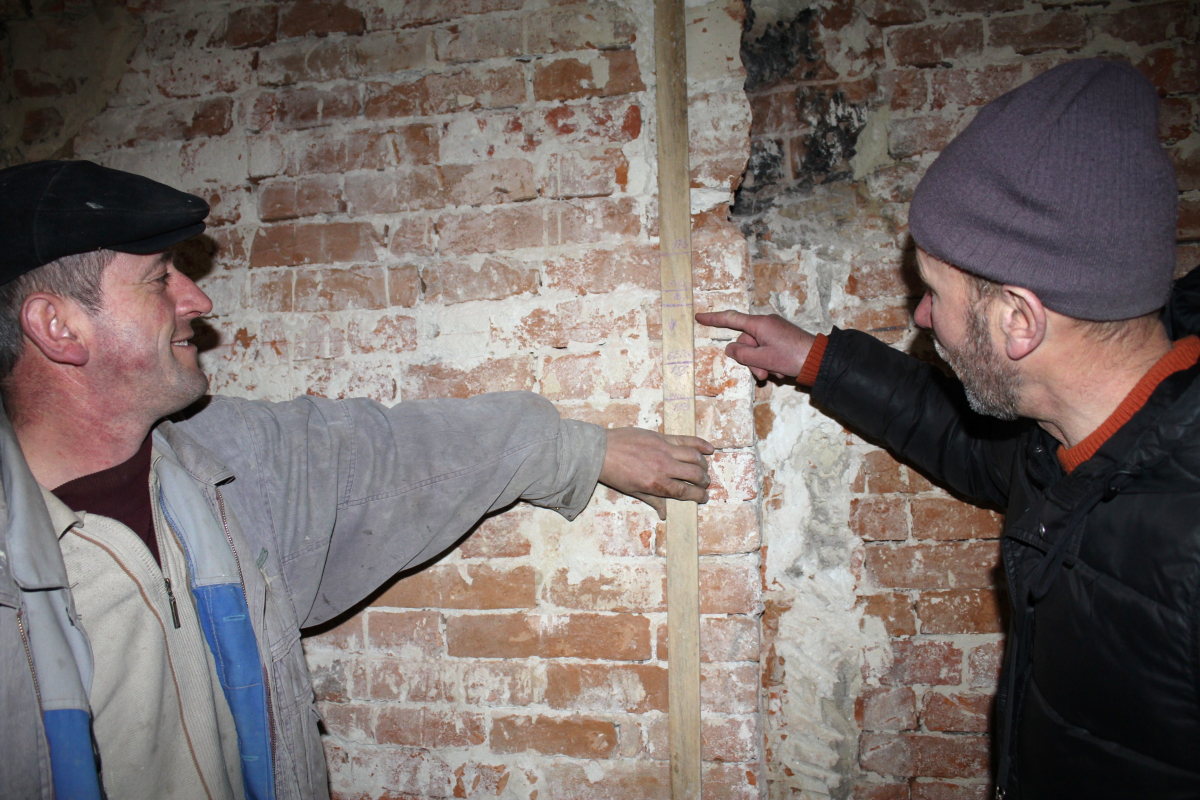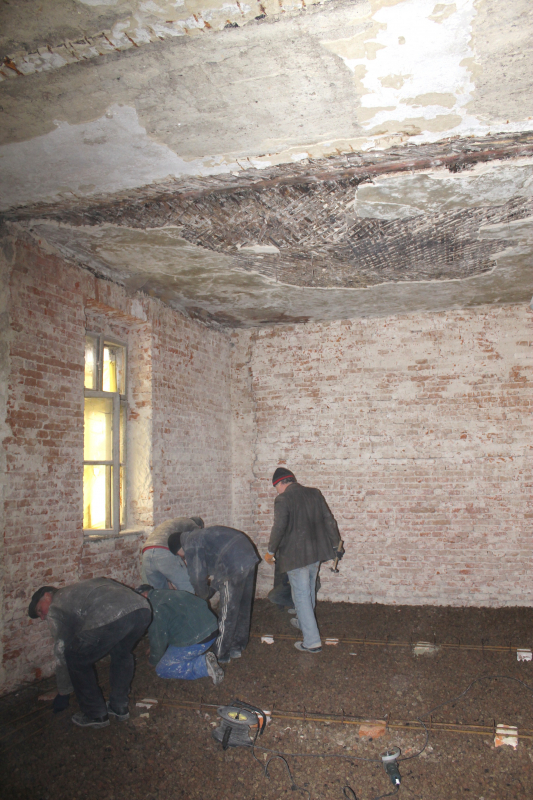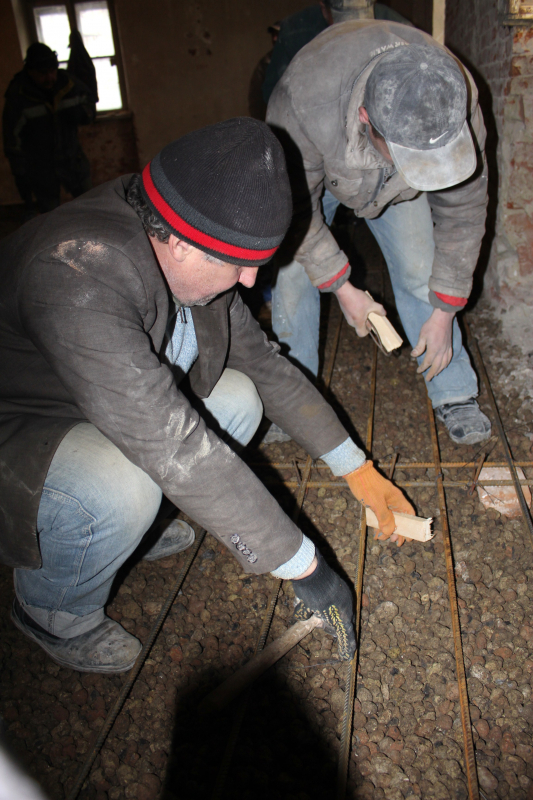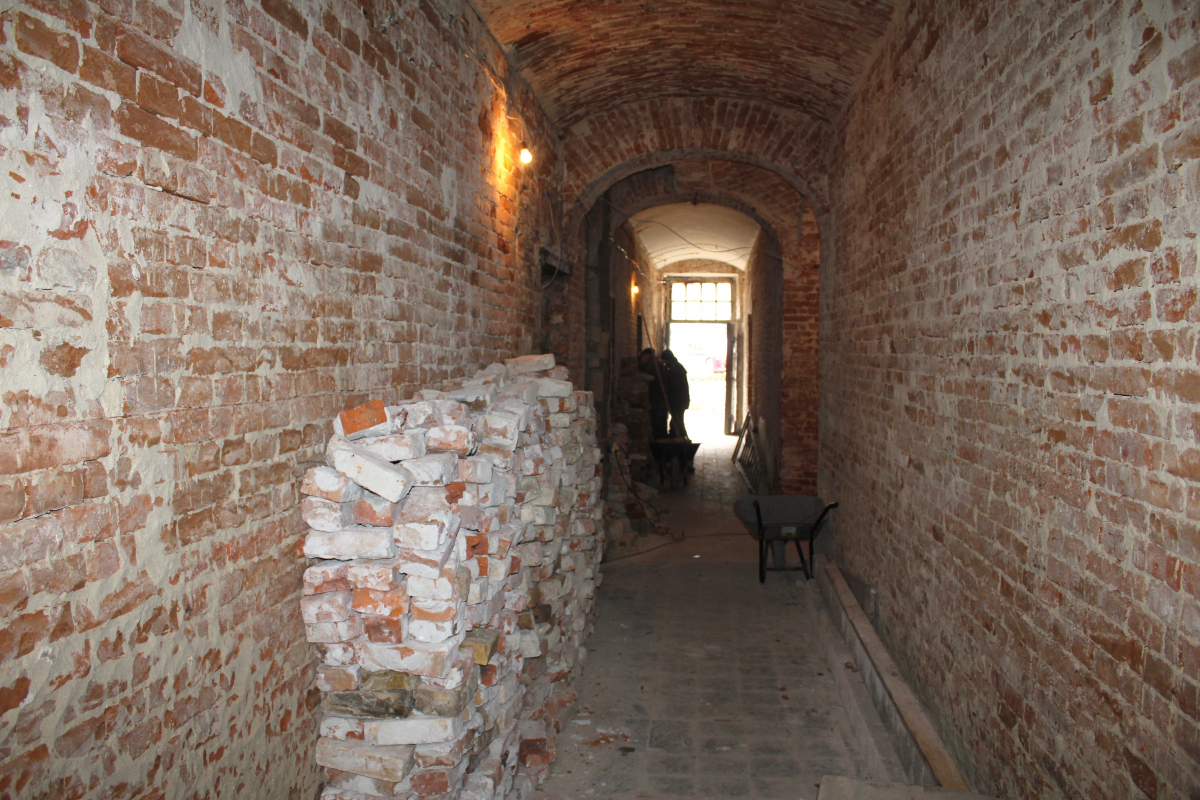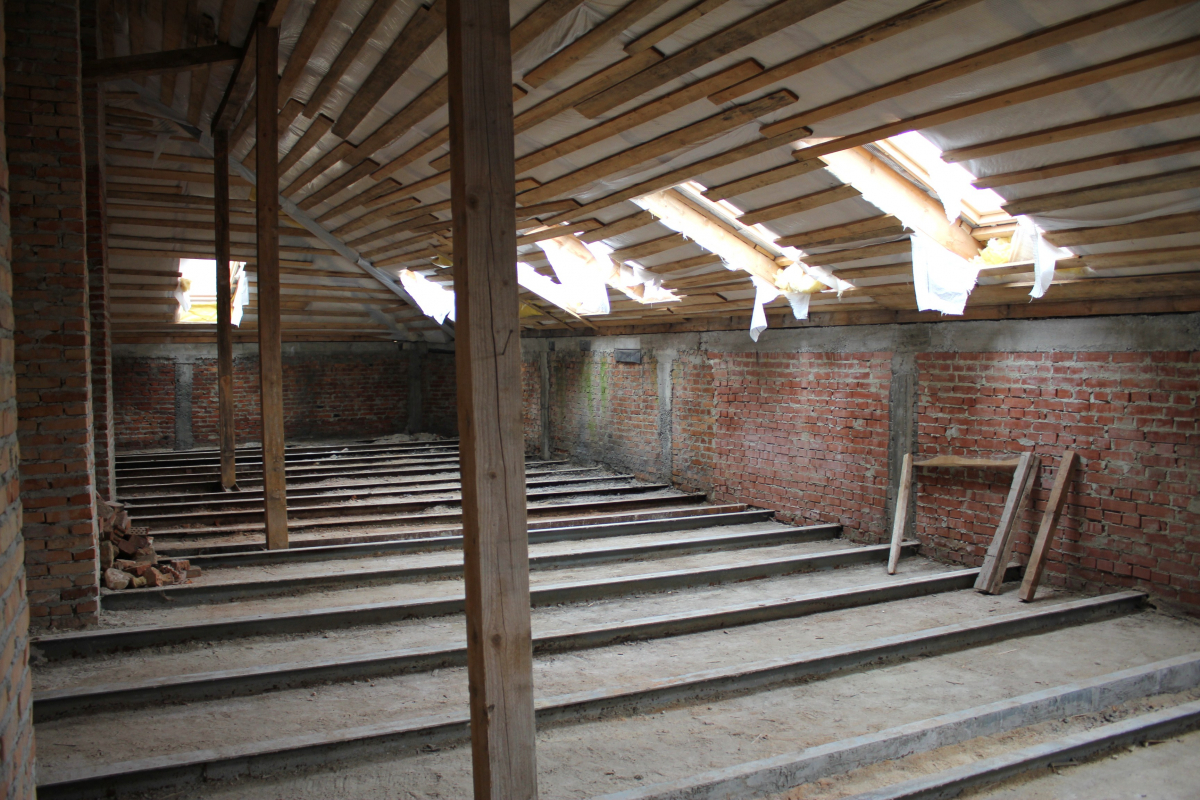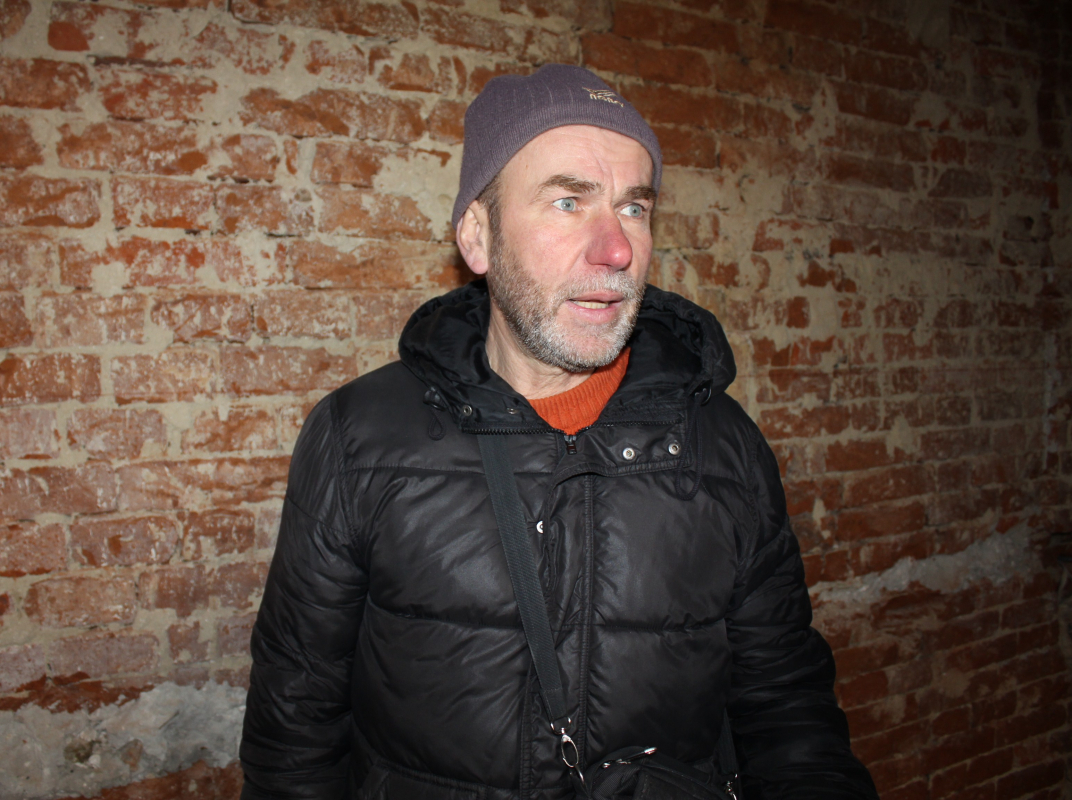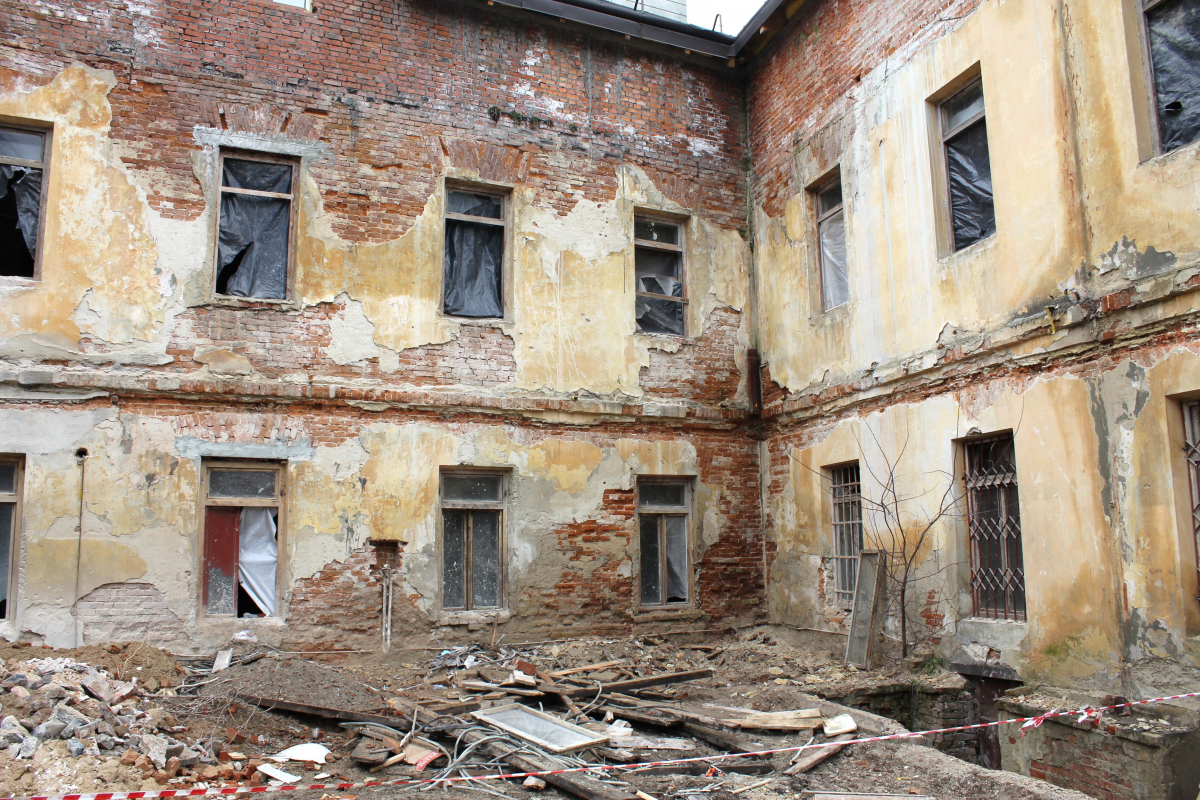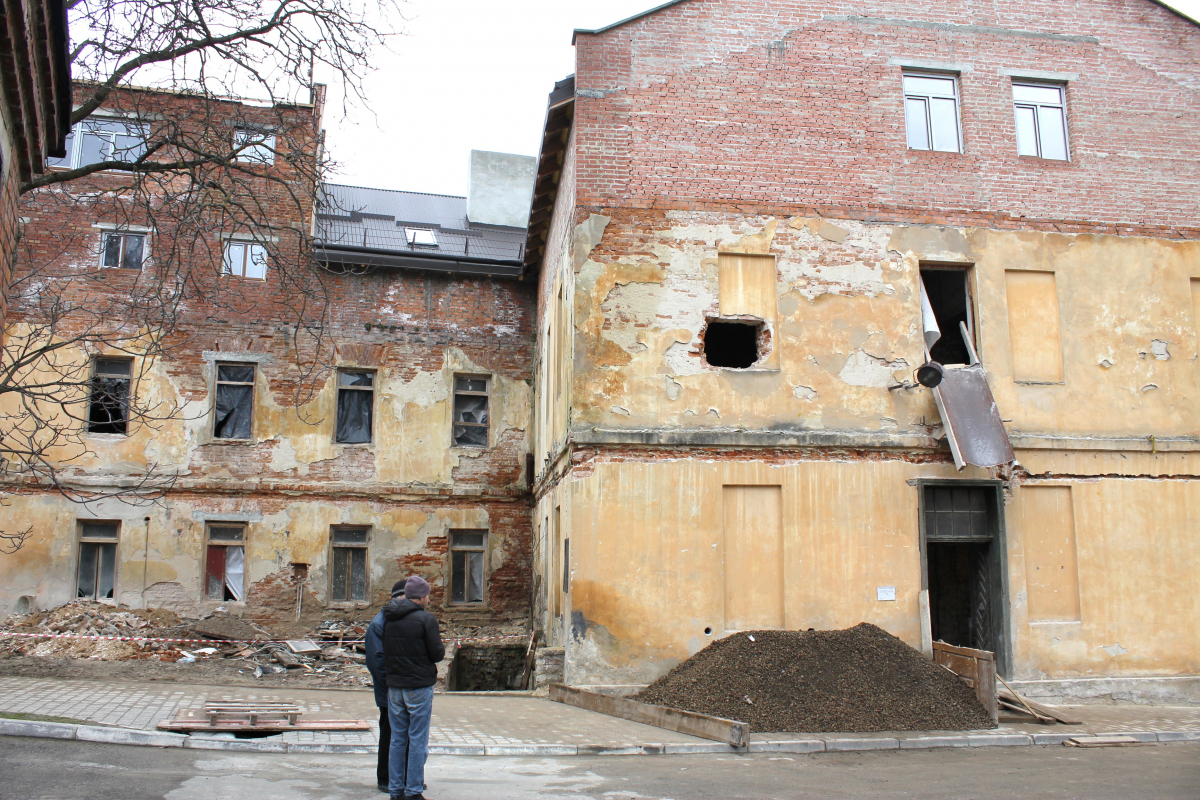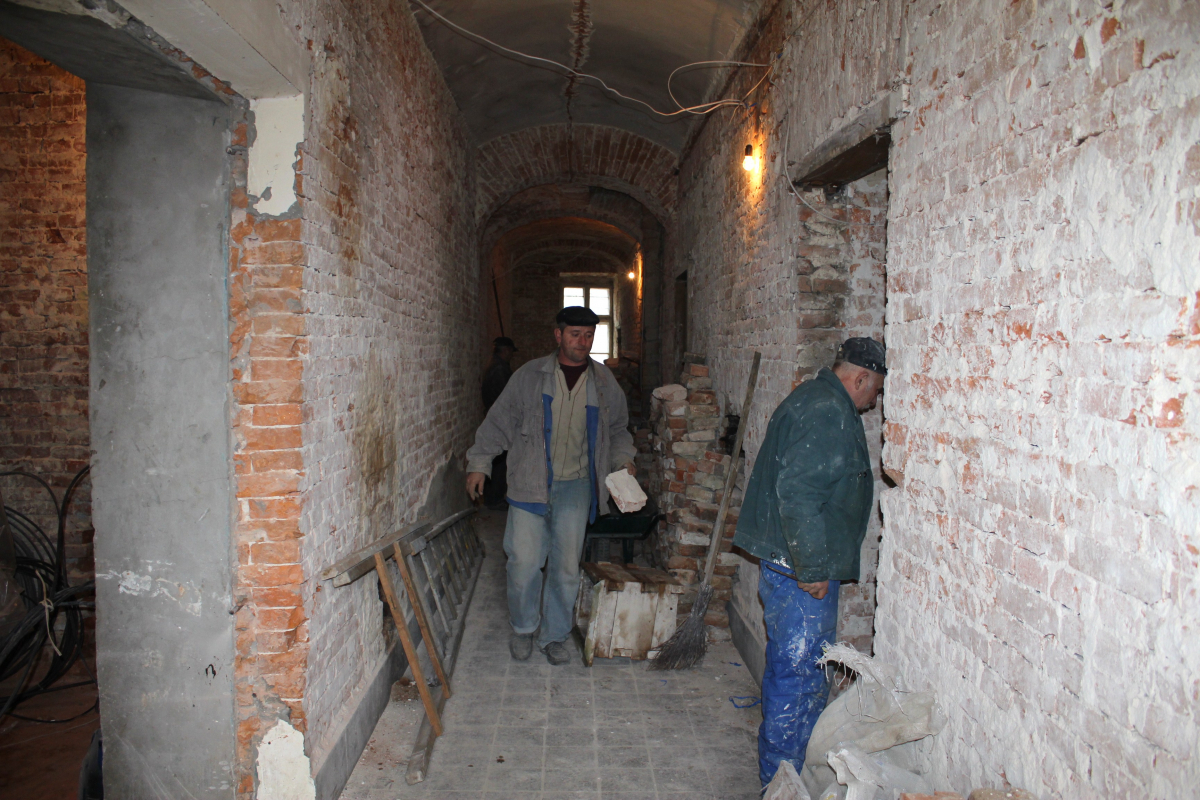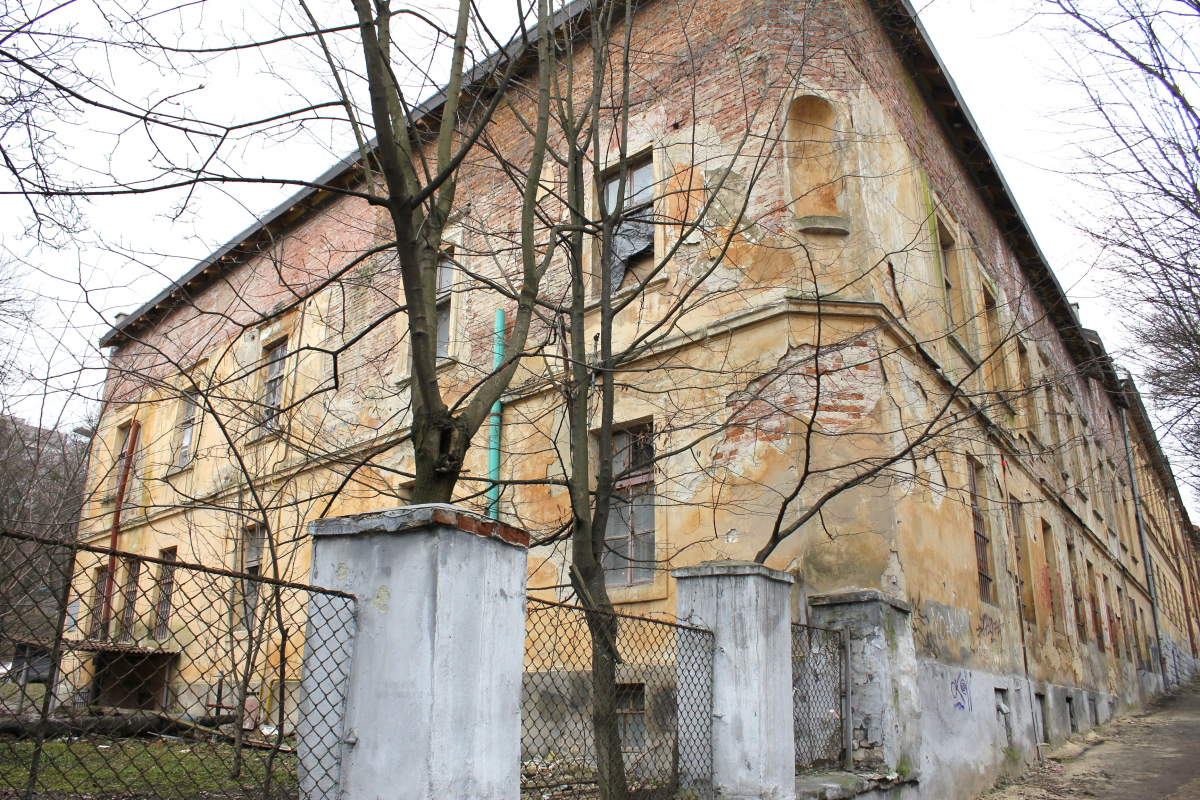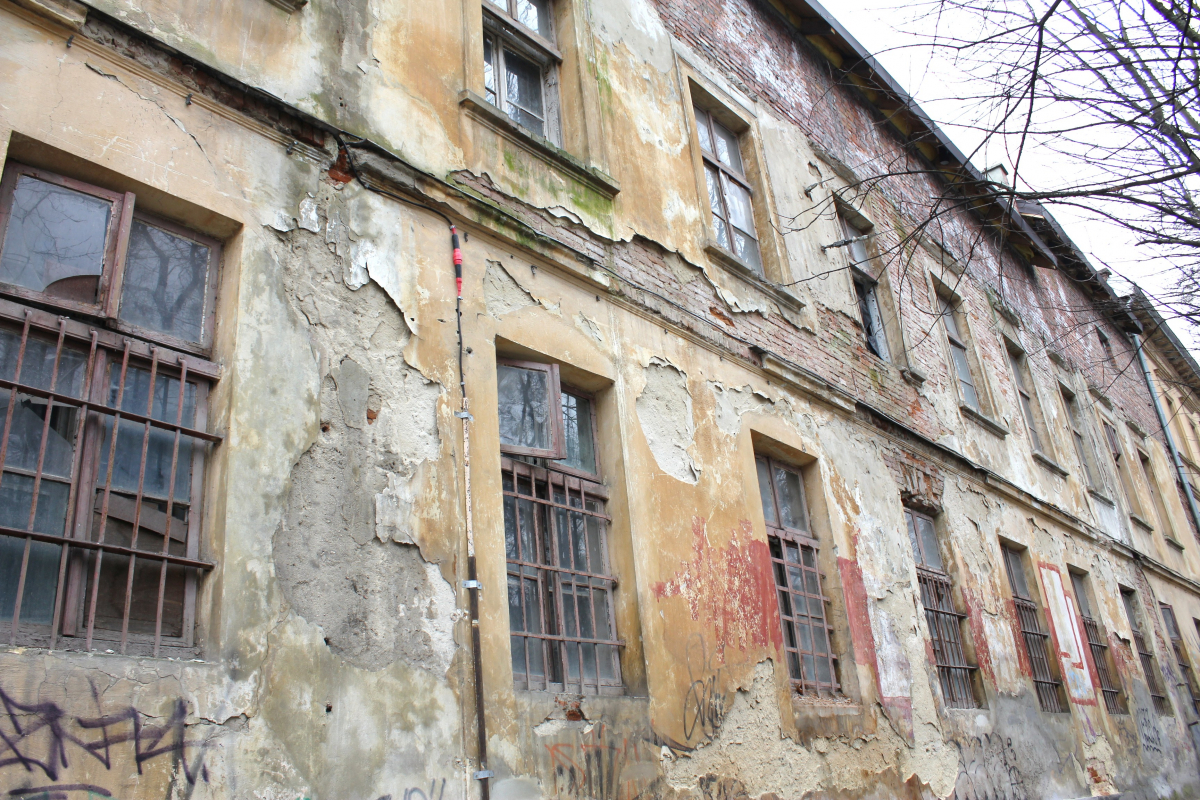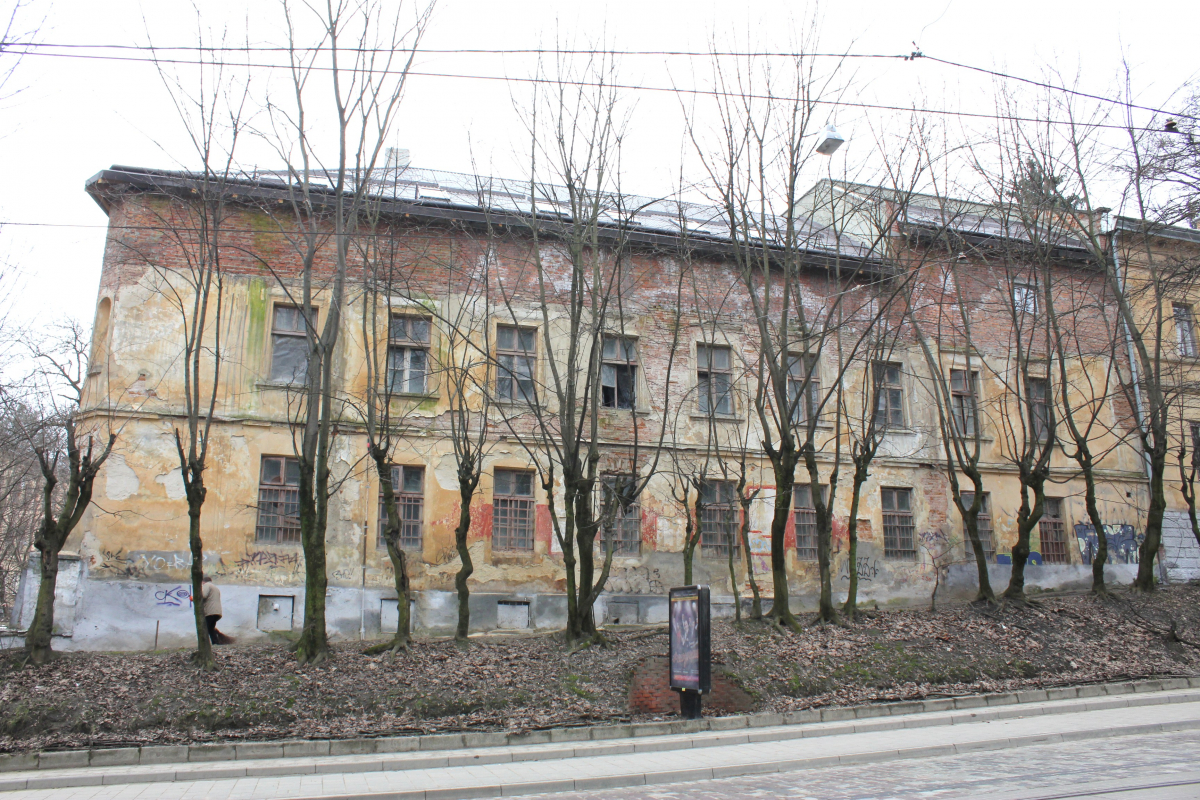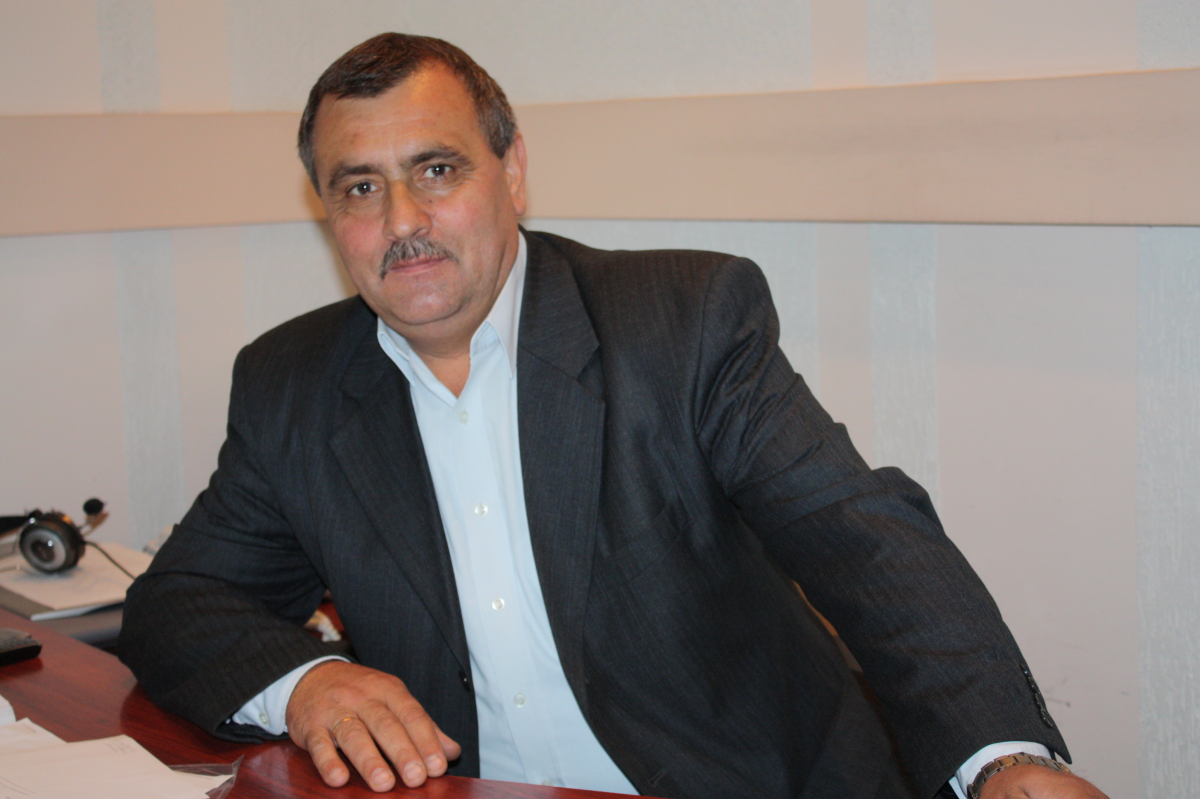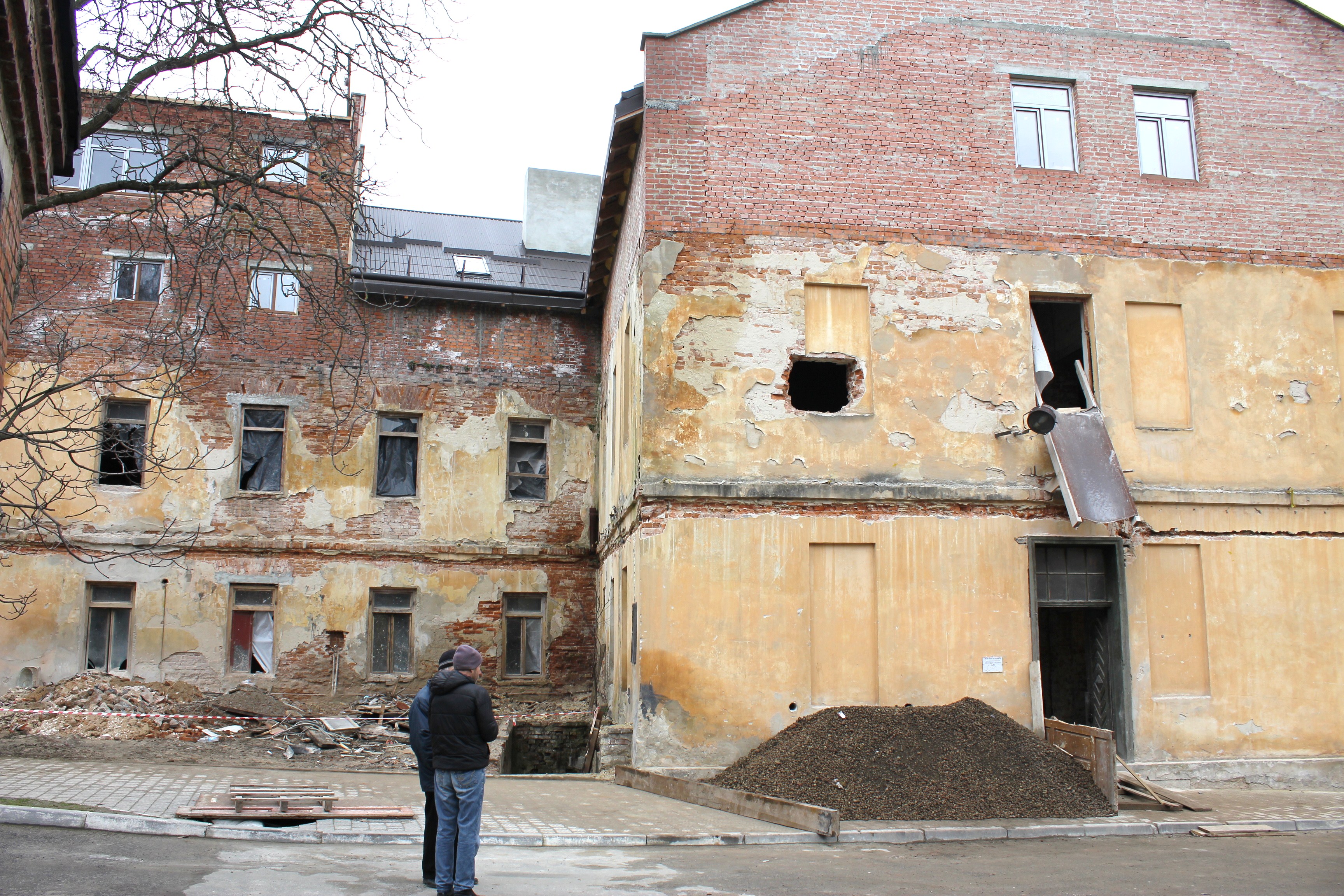This building on the territory of Lviv Polytechnic publishing house (one side of the building stretches along the road in Kopernyk street) has been a real eyesore for a long time. The fate of this building is unhappy. It has been vacant, windswept and open to rain for a long time. It was decided two years ago that the building had to be saved. First one contractor took on this work, then another one. Finally, the roof full of holes was replaced and the third garret floor was added.
This year, it is expected to locate the Business-Innovative center, StrartUp School and Co-working. Co-working in English means «working together». It is a model of organizing people working in one working environment. Yuriy Bobalo, University Rector, set a task for maintenance services – to get this building ready to be used by September 1, 2017.
It may sound like a reporter’s cliché but the renovations are in full swing. Contractor Maryan Zaliznyak’s team is working here. It is one of four bays of the University Division of Renovation. Maryan Volodymyrovych has been working at our University since December 2016 and has already made a name for himself as an energetic manager. We didn’t see any worker who was idling at the construction site. It seems that the contractor (a military man in the past) keeps strict discipline in his team. We paid attention to the following detail: 10 minutes before lunch break, one of the workers came up to the contractor asked, «Can we go to have lunch?». The contractor named Stepan Dukh, a 70-year-old carpenter, Ihor Pasternak, one more veteran, as well as Volodymyr Hadzetskiy, Ivan Fitak and Andriy Krukov among the best employees.
These days, the team is working on putting up steel reinforcement for concrete floor on the ground floor. The thing is that there was no floor between the basement and the first floor. There was only vault. They will also have to change wooden floor for concrete slabs in some places between the ground and the first floor.
The design of the renovation is being done by the Design Bureau «Polytechnic». They admitted that it was difficult to predict everything that came up in the course of the renovation work. That is why everything goes along with the design. It is because people would like to start using this building as soon as possible but the renovations have to be high quality. A group of the Institute of Architecture employees headed by Associate Professor Yaroslav Rakochiy is working on the interior design (there should be two conference rooms).
There is still a lot of work. It is no only interior renovations but also piping, electricity, heating. The contractor assured us, «We will make the deadline set by Rector, if there is no delay in providing building materials». .
Yaroslav Haidush, Head of the University Division of Renovations, explains this well-organized work at this and other sites not only by the employees’ competence but also by the team spirit and the feeling of responsibility for the assignment. He stressed that, «No matter what each worker’s speciality is, they all work as a team, when, for example, it is necessary to take away rubbish, prepare concrete or put up steel reinforcement». Yaroslav Dmytrovych himself has been working in Lviv Polytechnic since May 1984. He began his career as painter, then he became a foreman, contractor, technical control engineer. He graduated from the Building Department of Hydro-Meliorative College, later he studied at the Geodesy Faculty and Economic Faculty of our University.
Nowadays 60 people work in the Division of Renovations. I wondered how it was possible to avoid staff turnover, when a lot of construction sites need workers. Volodymyr Krayovskiy, Lviv Polytechnic Vice-Rector, who was present at this conversation, explained, «People got used to their team, they feel secure and protected. It is essential that Rector finds it possible to encourage employees in a material way. This Division is very important for us, we will hang on to it. Once, almost 150 people worked here. It is possible that with the improvement of the general financial situation, this team will grow. We have to do renovations all the time…».
Historic reference
The territory, where Lviv Polytechnic buildings 23, 23-а and 23-b (between modern Kolessa, Kopernyk, Stefanyk and Chaikovskiy streets) are located, was first mentioned in 1577 under the name of Kalicha Hora, because disabled and homeless people found shelter there. In 1619, the formation of the complex of St. Lazarus church and hospital began. In 1811, there was founded the Institute of poor Christians of Lviv, able to work.
In 1952, the building in Kolessa street (at that time it was Uchytelska street), where the Municipal tuberculosis hospital was located, was given to Lviv Polytechnic. It was turned into a student dormitory. According to the information in 1954, 335 lived there. There were 4 square metres for every person. In 1960, this building was given to Research Station-4 (measuring instruments). In 1972, Accounts Department, Canteen and the Department of Foreign Languages were located here.
Yuriy Bobalo, University Rector, remembered the time when he attended classes here. Then a lot of different units «stayed» in this building until it became dilapidated and unsuitable for use.
(Information from «Lviv Polytechnic Architecture Atlas», published to celebrate University bicentenary)
